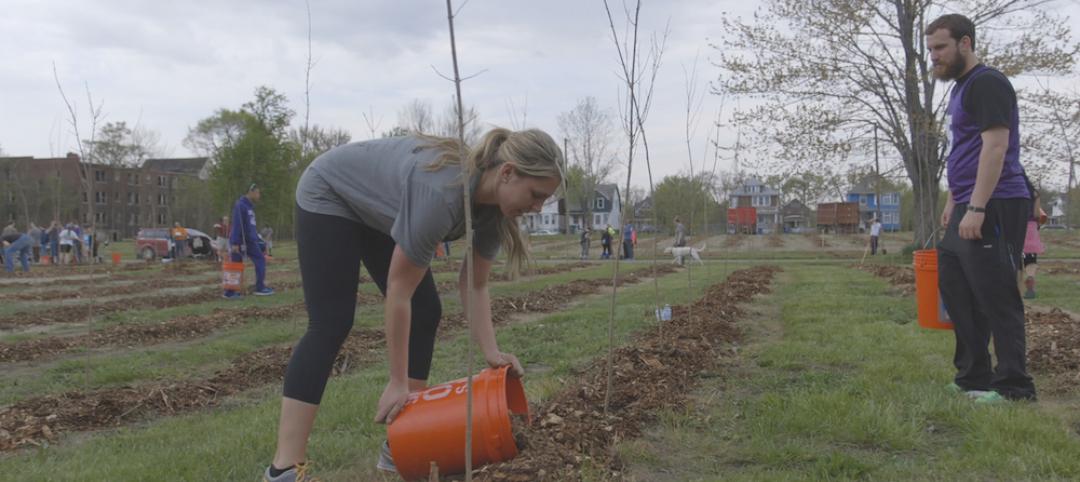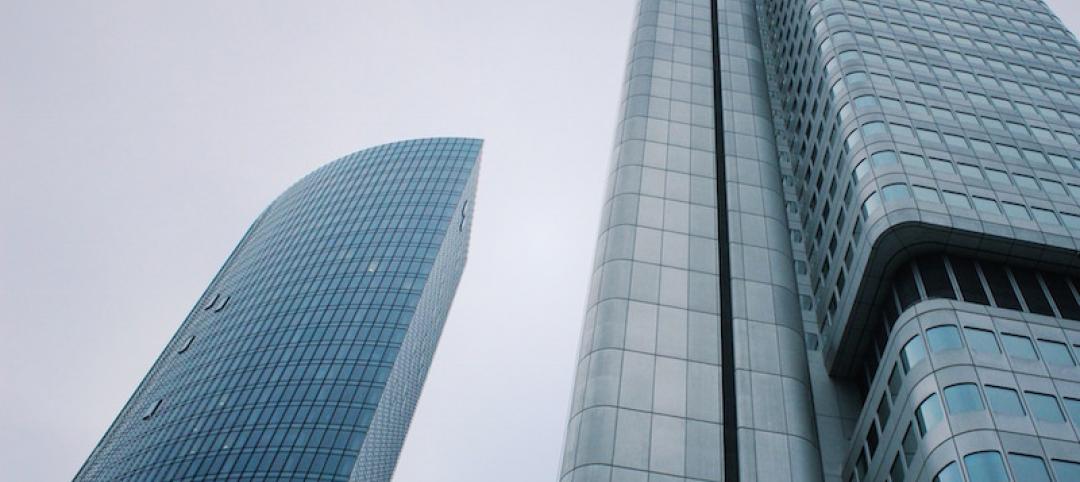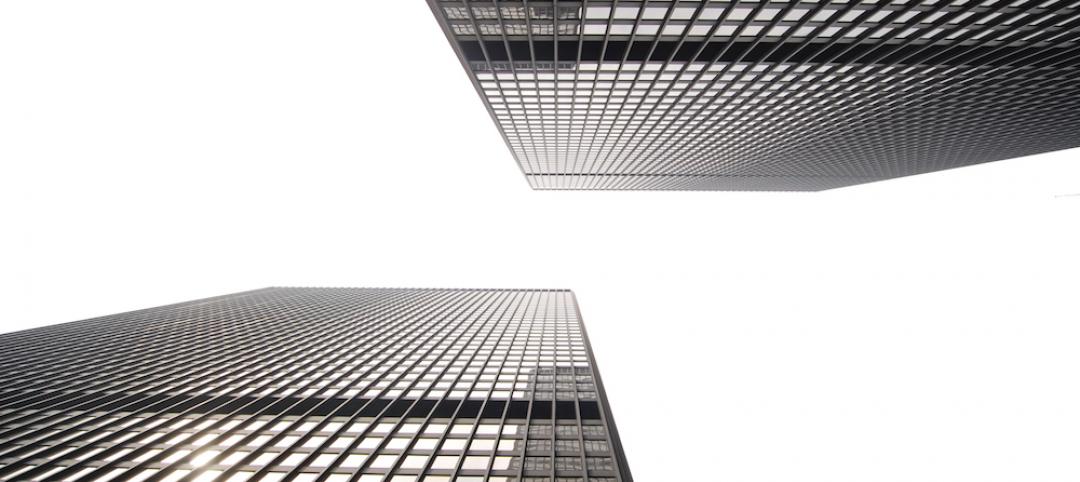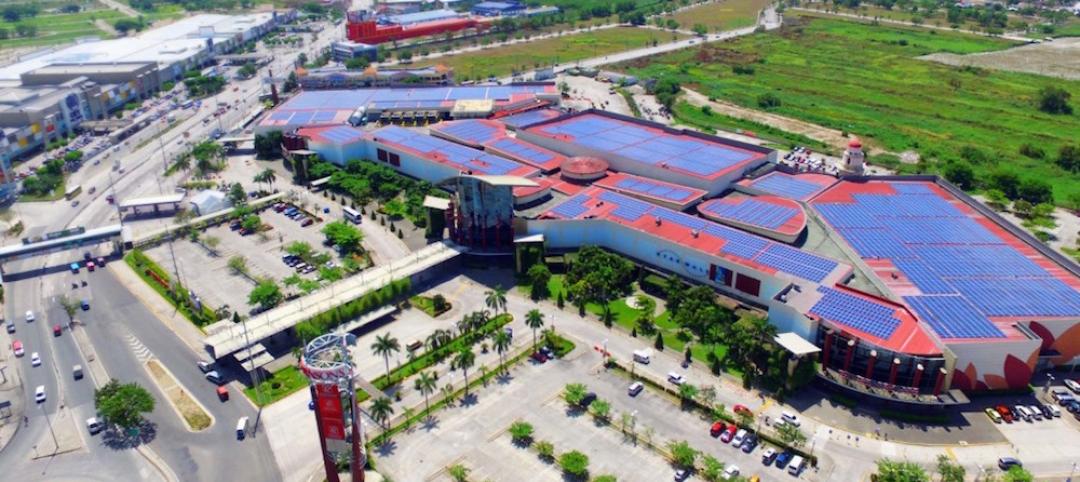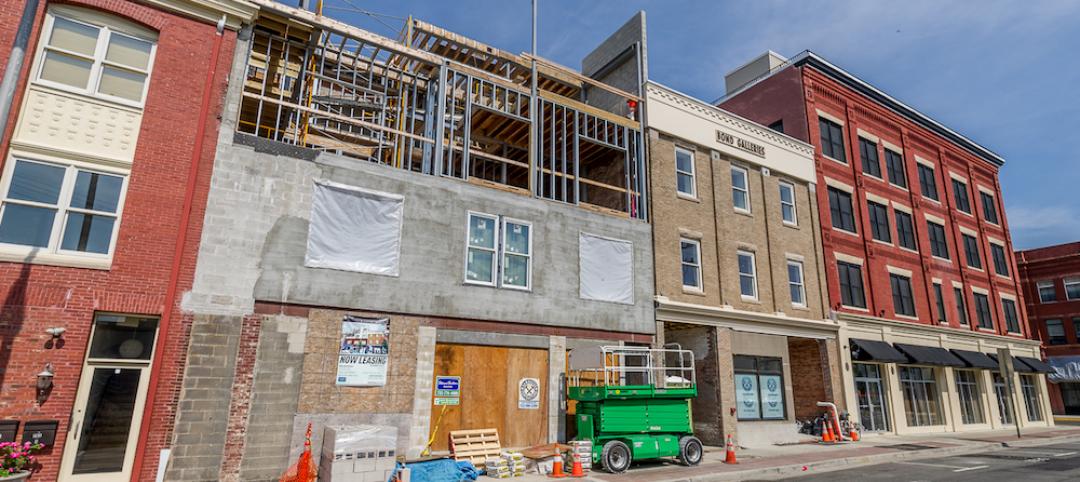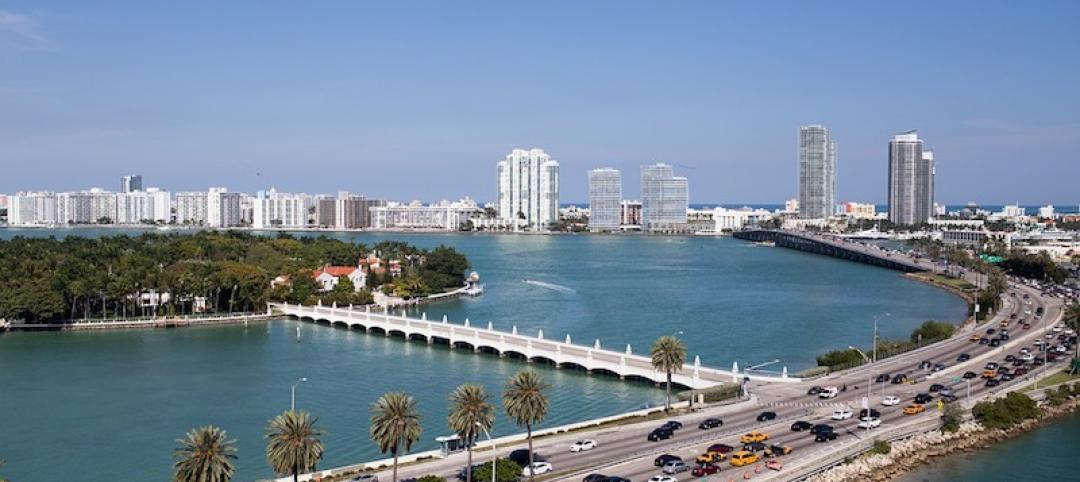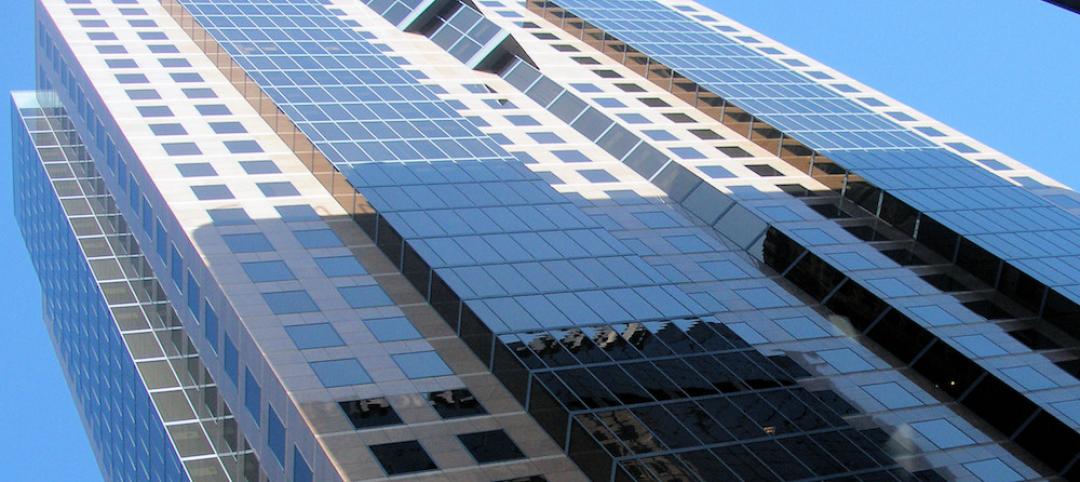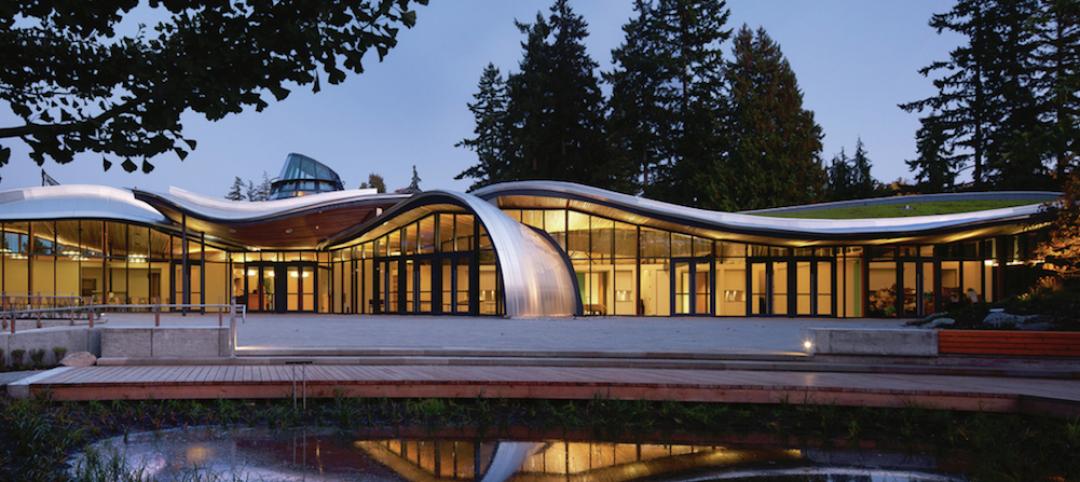When it comes to water conservation, Building Teams tend to concentrate on water-efficient plumbing fixtures, irrigation controls, graywater capture, and ways to recycle condensate from air-conditioning systems—all of which are important. Yet many of the best opportunities for saving water begin with big-picture thinking in a project’s earliest phases. The key: take a holistic view of how the site and building work together in the context of climate, adjacent properties, natural water sources, and regional water use planning.
LEARNING OBJECTIVES
After reading this article, you should be able to:
• Discuss large-scale water management, resiliency, and resource planning and how that can affect site design and building water conservation strategies.
• Describe one or more examples of “green infrastructure,” such as bioswales, for water conservation and stormwater management.
• Explain several ways to reduce water needs in the construction phase, and for landscaping and irrigation.
• List the typical approaches for improved water efficiency at the point of use, including low-flow fixtures, water recycling, and graywater systems.TAKE THE EXAM
Additional reading is required for this course. To earn 1.0 AIA CES HSW learning units, study the complete article carefully and take the exam posted at www.BDCnetwork.com/WaterManagement
“Across the country, droughts are becoming persistent, while increased torrential downpours are hampering other regions,” says Gita Nandan, RA, LEED AP, Architect/Principal with the design firm thread collective (threadcollective.com). Project owners and public officials need to understand water as a network, as part of a looped system. “It is an integral part of larger environmental, ecological, and social networks and vital to the livability of our future towns and cities,” she says.
In March, drought-ravaged California approved a $1 billion spending package, including emergency relief for the state’s Central Valley and new statewide rules for flood control, desalination, and water recycling. Yet water conservation is not unknown in California. The Los Angeles Unified School District has taken major steps to reduce water consumption across its campuses, which serve 660,000 students. The school district uses enough water each year to completely drain the Hollywood Reservoir—about 2.5 billion gallons, says Christos Chrysiliou, Director of LAUSD’s architecture and engineering services group. “We’ve done a lot of work to bring it down, and we’re now doing a lot more,” he says.
“Projects in regions where resources are limited are fully aware of the impacts of water savings and incorporate effective water-reduction strategies,” says mechanical engineer James Del Monaco, Sustainability Director at P2S Engineering (www.P2Seng.com). Breeze Glazer, LEED AP BD+C, Senior Associate and Sustainable Design Leader in Perkins+Will’s New York office, adds: “Generally speaking, the cost of water in the U.S. is less than in other parts of the developed world. In places like New York and Boston, however, water rates are high and steadily increasing, so the case can be made around cost savings to focus on conservation.”
Robert Gross, AIA, LEED AP, an Associate with Lee H. Skolnick Architecture + Design Partnership (skolnick.com), says, “We’ve done a significant amount of project work in the Caribbean, where the cost of municipally-provided water is exorbitant, and initial costs to implement water conservation strategies are quickly recouped by operational savings.” In areas where water is cheap, water conservation becomes more of a moral or ethical directive, or a marketing option to promote a “healthy” project, he says.
1. make ‘water resiliency’ a strategy.
For all climatic regions, whether parched or inundated, designing for water resiliency through a mix of conservation and resource management is crucial, says Nandan. “Water conservation should be considered holistically for the building, the site, the cityscape, and the environment,” she says. “By designing for water conservation and tying this to alternative water sources—such as rainwater harvesting—owners and developers can reduce economic burdens and be safeguarded against water service interruptions.”
Water conservation must be considered in light of water resource management, which expands the purview of the owner, architects, civil engineers, landscape architects, and contractors. New land-use development may affect water-resource planning and watershed management as well as hydrological processes for surface water and groundwater. The relationship between built and natural environments can open new channels to protecting water resources, affecting everything from water quality and habitat restoration to stormwater management and irrigation practices, according to the American Society of Landscape Architects. ASLA’s Sustainable Sites Initiative (www.sustainablesites.org), a rating system for land development and management, recognizes building projects that reduce water use, improve filtration, and promote healthy aquatic ecosystems.
MORE WATER-SAVING IDEAS
Check out these resources for more ways to reduce water usage in buildings you’re designing and constructing:
1. High-efficiency Systems for Interior Use: www.BDCnetwork.com/HighEfficiency
2. ‘Solar Water’ Poised as Global Solution: www.BDCnetwork.com/SolarWater
3. Net-Zero Water Use Drives Design of Sustainability Center: www.BDCnetwork.com/NZWater
4. Philadelphia Community Center’s Site, Cisterns, and Savings: www.BDCnetwork.com/PhillyCenter
Building Teams are addressing water resiliency and water resource management. Recent projects include features meant to help improve the regional water conditions or increase the usability of rainwater or other water originating on the project site. For Philadelphia’s Salvation Army Ray and Joan Kroc Corps Community Center, MGA Partners Architects (www.mgapartners.com), in association with PZS Architects (pzsarchitects.com) and landscape architects Andropogon Associates (www.andropogon.com), created seven rain gardens, a porous athletic field, and a porous asphalt parking lot. They used engineered soil mixes that return water runoff to the surrounding environment naturally. Two runnels channel air-conditioning condensate and roof runoff to underground cisterns, where the water is stored for irrigation. Up to two inches of stormwater runoff from the site and building can be captured, reused, and infiltrated on site.
The Engineering and Science University Magnet School in New Haven, Conn., employs a small on-site constructed wetland for student education. Students can take samples from the muddy water or nearby runoff. For developer Albanese Organization, architect Rafael Pelli designed The Visionaire condominium in Lower Manhattan with systems for advanced water recycling, treatment, and clarification. P+W’s Peter Busby, FRAIC, LEED Fellow, designed the VanDusen Botanical Garden Visitor Centre in Vancouver, B.C., to expand wetland vegetation, add habitat for red-winged blackbirds and Pacific tree frogs, and achieve net-zero water use by means of a bioreactor and graywater and rain filtration.
2. Employ green infrastructure concepts.
The use of green infrastructure systems is becoming more accepted for site and building water management techniques as a “more natural and ecologically beneficial design method,” says thread collective’s Nandan.
According to the U.S. EPA, green infrastructure combines “vegetation, soils, and natural processes to manage water and create healthier urban environments.” Sometimes called soak-and-store features, green infrastructure acts in contrast to the conventional approach in most urban areas, where stormwater is drained through engineered collection systems and discharged into nearby water bodies. The latter practice carries in its waste streams high levels of bacteria, heavy metals, and trash that degrade the receiving rivers, lakes, and oceans, says the EPA.
Green infrastructure can be adopted on a project site through stormwater system design, or across an entire regional area using large-scale geological and hydrological features. “At the scale of a city or county, green infrastructure refers to the patchwork of natural areas that provides habitat, flood protection, cleaner air, and cleaner water,” says the EPA.
Integrated green strategies emphasize that the design of the water system can help “support a more just, creative, and resilient future,” says Nandan. “If adjacent sites and local users need water, the building owner and developer can help control and deliver water where it is most needed.” Building Teams can also create “net-zero waste streams” by using biowaste treatment systems (often called living machines) that produce potable or irrigation water. “These social aspects of project design are fundamental for equitable, thoughtful developments,” says Nandan.
 Vale Living with Lakes Centre, a research facility for sustainability and environmental restoration at Laurentian University, Sudbury, Ont., employs green roofs as wildlife habitat and to slow stormwater movement. Any water not absorbed is diverted to a bioswale in the parking area, according to prime engineer J.L. Richards & Associates and architect Perkins+Will. Photo: Tom Arban Photography, courtesy Perkins+Will
Vale Living with Lakes Centre, a research facility for sustainability and environmental restoration at Laurentian University, Sudbury, Ont., employs green roofs as wildlife habitat and to slow stormwater movement. Any water not absorbed is diverted to a bioswale in the parking area, according to prime engineer J.L. Richards & Associates and architect Perkins+Will. Photo: Tom Arban Photography, courtesy Perkins+Will
Complex, sophisticated, and environmentally responsive, these novel building designs also show how to contribute to regional water supply and habitat protection, not just how to reduce usage levels. “The main driver of water conservation today is the understanding that natural resources are limited and that future generations will be impacted by today’s design decisions,” says Jorge Mastropietro, AIA, Principal of Jorge Mastropietro Architects Atelier (jmapc.com). “Yet it also affects the triple bottom line by decreasing the impact on water infrastructure.”
The use of water in landscaping alone can determine up to 20% of a facility’s overall usage, according to Joseph Bourg, CEO/Founder, Millennium Energy LLC. In the Whole Building Design Guide [www.wbdg.org/resources/water_conservation.php], Bourg lists three top considerations for water-efficient landscape design:
• Total area of turf and other irrigated areas
• Efficiency of the irrigation systems
• Native, climate-appropriate landscape materials
The third element may benefit from the use of xeriscape, also called drought-tolerant landscaping or smart-scaping. “Xeriscaping utilizes only native or adaptive vegetation that can typically survive solely on annual rainfall instead of supplemental potable water,” says P+W’s Glazer.
Originally conceived by the public utility Denver Water, xeriscaping takes advantage of seven principles of design and operations, including efficient irrigation and proper maintenance. The approach starts with proper plant selection for the climate, supplemented with soil amendment, such as adding compost to improve water retention or converting to a gravel soil for arid and semi-arid climates—whatever best suits the anticipated plantings.
Xeriscape uses organic and inorganic mulches, which keep soils cool and minimize water evaporation and crusting of soils. The technique also applies to selecting native grasses such as buffalo grass and blue grama rather than bluegrass varieties. Denver Water’s “Water Wise Landscape Handbook” (http://bit.ly/1DZTpaa) lists new varieties of bluegrass, such as Reveille and tall fescue, that can slash water needs 30% or more, and fine fescues to reduce water needs in low-traffic areas and shaded lawns.
Green infrastructure strategies have been employed at the Vale Living with Lakes Centre at Laurentian University, Sudbury, Ont. Rainwater that is not absorbed by the building’s vegetated green roof is diverted to a plant-filled bioswale within the parking area. (Compost or riprap can also be used in the bioswale.) Water flows from the bioswale to a retention pond, where it settles and is stored for graywater reuse in the building. Any overflow from the pond is released into a restored, constructed wetland, where a final level of polishing occurs. Stormwater that lands on the parking area is filtered through a permeable paving surface where it is slowed and directed to the bioswales or the pond, says P+W’s Glazer. Façade and paving materials were selected to help condition the reclaimed water. “The use of Manitoulin Island limestone helps neutralize the residual acidity of stormwater from past smelting activities,” he says.
3. Get the site ready to save water.
Site planning is a crucial factor in water management, says Mastropietro. “When designing in highly compact urban environments, we use green roofs to collect rainwater but also to provide some natural space within an urban setting,” he says. “All landscaping is designed in a manner that most effectively reduces runoff.” For larger sites and suburban locations, a mix of green roofs, natural site features, and enhanced filtration and retention through green infrastructure can contribute to the site’s inherent water effectiveness.
“The general strategy should include an integrated landscaping and hardscape design that provides occupants with a connection to nature while striving to reduce ecological impacts,” says P+W’s Glazer. This gives impetus to specifying native and adapted vegetation that reduces the need for irrigation, maintenance, and pesticide use. Hardscape areas should use light-colored materials with high albedo (whiteness), which reflect a larger fraction of solar shortwave radiation away from the earth, thereby reducing urban heat island effect, says the EPA.
For stormwater management, Glazer recommends considering the use of porous pavement, green roofs, retention ponds, underground storage tanks, and bioswales. Bioswales are landscape elements that filter silt and pollution from surface runoff using a swaled drainage course—low, moist, and marshlike, with 6% or less sloped sides.
According to Elliott Maltby, Landscape Architect and Principal with thread collective, such site considerations help limit flooding from severe weather, reduce stress on municipal water and sewage systems, and diminish the possibility of water shortages. “Managing water needs and water‘s impact on the building and its site is an element of resiliency,” says Maltby. The firm’s “Lowlands” project retrofits green infrastructure and integrated stormwater management onto a New York City Housing Authority multifamily development. “Social and ecological vulnerabilities are often present in public housing developments, many of which are located on former wetlands,” says Maltby. The redesigned public spaces not only manage water, according to NYCHA, but also increase access to open space, enhance youth-oriented play areas, and encourage social interaction among residents and visitors.
4. Improve water efficiency on the job site.
During the actual construction process and in the operations phase, rainwater can be collected for use in portable toilets, hand washing, even for washing tools, says design-builder/architect Mastropietro. “We also implemented a nylon screen fence on an existing school’s chain link fence,” he notes. “This helps keep dust down and reduce the use of water to clean its driveway during a long construction phase,” he says.
Mastropietro’s construction teams require a silt fence to prevent soil erosion and dirt from entering the storm drainage system. In a recent school project in New Jersey, his firm met the state’s Department of Environmental Protection requirement for wheel-wash stations at the project’s ingress and egress points by using a crushed-stone entryway to the site. This, coupled with the use of an existing concrete sidewalk, obviated the need for the wheel wash for trucks entering and leaving the site and saved thousands of gallons of water, says Mastropietro.
 Where it is not possible to use retention ponds, bioswales, or wetlands to handle storm overflow, Building Teams may use a combination of underground water storage, permeable paving systems, and exterior materials that can neutralize any harmful aspects of the runoff, such as residual acidity. Rendering courtesy Perkins+Will
Where it is not possible to use retention ponds, bioswales, or wetlands to handle storm overflow, Building Teams may use a combination of underground water storage, permeable paving systems, and exterior materials that can neutralize any harmful aspects of the runoff, such as residual acidity. Rendering courtesy Perkins+Will
Water is used heavily on construction sites for environmental housekeeping, dust suppression (including hydro-demolition and the cleaning of ready-mix concrete trucks), and high-pressure surface cleaning, especially for reconstruction and maintenance projects, according to a report conducted by Mabbett & Associates for the U.K.-based Waste & Resources Action Programme (WRAP) and the Strategic Forum for Construction. A surprisingly high level of water use was noted by WRAP for physical plant commissioning and testing.
Dozens of simple fixes, such as repairing leaky pipes, can be applied to save water, the WRAP study found. Some project sites are metered for volumetric consumption, while many job sites are not even registered with the local water utility. Use of water meters and paying for usage by volume would help achieve a “significant reduction in water consumption,” according to the WRAP study.
5. Capture and reuse rainwater.
When it comes to water recycling, capturing rainwater for reuse is becoming a very attractive option informing building design.
Rainwater harvesting focuses on intercepting stormwater runoff for beneficial use. The subject buildings and landscapes “can be designed to maximize the amount of catchment area, thereby increasing rainwater harvesting possibilities,” says Reagan M. Waskom, PhD, Director of the Colorado Water Institute and Chair of Colorado State University’s Water Center. The intercepted water can be collected, detained, retained, and routed for use in evaporative coolers, toilet flushing, pet and car washing, indoor plant watering, pet and livestock watering, and lawn and garden irrigation.
Rainwater harvesting works best with simple designs. Architectural gutters and downspouts, along with sturdy storage containers—or just directing rainfall directly to plantings and lawns—provide a lasting and easy-to-maintain solution. Aboveground plastic tanks or decorative wood barrels should be fitted with lids to reduce evaporation and minimize mosquito breeding, says Waskom.
Waskom cautions that rain in urban and industrialized areas may contain impurities absorbed from the atmosphere, including arsenic and mercury. Locales with infrequent rain (like parts of Colorado) can experience accumulations of bird droppings, dust, and other impurities on rooftops between rain events. He advises Building Teams to consider adding screening and filtration to the rainwater harvesting setup to catch these impurities.
Another option to consider: first-flush devices, which use the initial runoff from roofs and gutters to clean those surfaces and direct contaminants away from collection pipes and cisterns. Some of these are simple mechanical devices, while other use gauges, sensors, and actuators. “Roof washing is not needed for water used solely for irrigation purposes,” says Waskom. “However, prefiltering to keep out debris will reduce sediment buildup in the irrigation system.”
Note: Regulations vary widely among localities in the U.S. regarding the return of harvested rainwater for domestic water use in the building, even for systems fitted with disinfection equipment. Local and state regulations will dictate how rainwater capture can be used and the standards for drinking water.
6. Put the facilities director and O&M staff in the picture.
After the construction team rolls out, the facilities and O&M professionals take responsibility for water usage in the building. For outdoor usage, water efficiency can be especially critical for developments with significant irrigation needs. Denver Water notes that the efficiency of a site’s automatic irrigation systems can be enhanced by 1) zoning turf areas separately from other planted areas, and 2) using the most efficient irrigation method for the vegetation in each zone. Denver Water recommends gear-driven rotors or rotary spray nozzles for grass areas, with large-droplet spray directed at low angles to avoid wind drift. For trees, shrubs, flowers, and other groundcovers, the utility suggests drip-line, spray, and bubbler emitters. A rain sensor can be added to eliminate redundant watering.
Hand watering may be necessary in some cases. For starters, facility managers should train their staffs to use the correct technology. Oscillating sprinklers and other systems that throw water high in the air or release a fine mist should be avoided in favor of sprinkler heads that produce big drops as close to the ground as possible. Managers should direct personnel to water deeply (but as infrequently as possible) to encourage growth of deeper roots. Daytime watering should be avoided to prevent water from being lost to evaporation. Hand and automatic irrigation techniques can be adjusted to meet varying weather conditions.
Design it right, design it tight
Whether indoors or outdoors, building systems should be constructed and operated carefully to reduce accidental water losses. Leak detection and correction should be a way of life in building design, construction, and operations. “We have found numerous leaks in aging underground domestic water distribution systems that go unnoticed for many years,” says P2S Engineering’s Del Monaco. One relatively simple way to detect leaks is to compare measurements from building water submeters with main water meters; if there’s a noticeable discrepancy in the readings, there may be a big leak.
Building Teams should identify the appropriate materials and systems to improve the durability of water-related systems and to ensure that the materials and methods of joining sections are appropriate for the application, says Del Monaco. Building Teams should look at the water quality of the mechanical system and take appropriate measures to incorporate equipment to treat the water as needed for the end use.
Use efficient design to reduce the potential for leaks. “Design the shortest runs with the least amount of fittings and elbows possible in order to reduce possible leak locations,” says Mastropietro.
Related Stories
Movers+Shapers | Jun 17, 2016
Hantz Woodlands brings thousands of trees to hard-pressed Detroit neighborhoods
One of the city's richest residents, John Hantz, is buying hundreds of acres of vacant property, tearing down dilapidated structures, and planting trees in the space.
Movers+Shapers | Jun 15, 2016
GREEN GIANT: Jerry Yudelson is revamping the green building movement
The author and former president of the Green Building Initiative is critical of current green building rating systems, including the LEED rating program.
Green | Jun 9, 2016
SmithGroupJJR’s Brock Environmental Center converts rain into drinkable water
The education building generated 83% more energy than it consumed over the last year en route to earning Living Building Challenge (LBC) certification.
Sustainability | Jun 8, 2016
New program certifies the performance of existing buildings in the U.S.
BREEAM USA, an offshoot of a program already in place in Europe, aims to ease the point of entry.
Green | Jun 8, 2016
TD Bank Group's renovated Toronto office is first WELL-Certified project under WELL v1
The newly renovated 25,000-sf space achieved gold-level status.
Shopping Centers | Jun 3, 2016
Developer Robinsons Land adds powerful PV arrays to 10 malls in the Philippines
The Robinsons Starmills mall in San Fernando recently turned on a 2.9 megawatt rooftop PV plant.
Green | Jun 2, 2016
USGBC offers new LEED pilot credit: Building Material Human Hazard and Exposure Assessment
For assessing human health-related exposure scenarios for construction products.
Green | May 31, 2016
Miami Beach requires developers to meet green standards or pay a fee
Applies to structures larger than 7,000 sf.
Codes and Standards | May 25, 2016
LEED Dynamic is worth the effort, says commercial real estate executive
San Diego office tower is California’s first office building to receive LEED Dynamic plaque in recertification.
Green | May 23, 2016
Perkins+Will achieves first Living Building Challenge Certification with Vancouver visitors center
The VanDusen Botanical Garden Visitor Centre was recognized for its use of healthy building materials, on-site renewable resources, and filtered rainwater to meet greywater requirements.


![6 steps toward better water management [AIA course] 6 steps toward better water management [AIA course]](/sites/default/files/VanDusen513.026_grassfix_stairfix.jpg)
